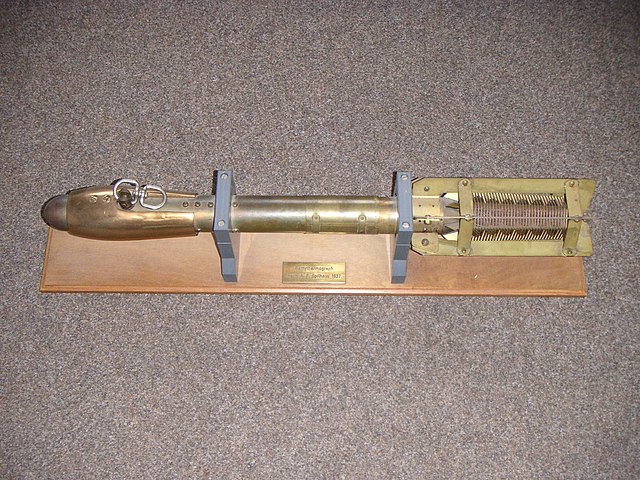The bathythermograph, or BT, also known as the Mechanical Bathythermograph, or MBT; is a device that holds a temperature sensor and a transducer to detect changes in water temperature versus depth down to a depth of approximately 285 meters. Lowered by a small winch on the ship into the water, the BT records pressure and temperature changes on a coated glass slide as it is dropped nearly freely through the water. While the instrument is being dropped, the wire is paid out until it reaches a predetermined depth, then a brake is applied and the BT is drawn back to the surface. Because the pressure is a function of depth, temperature measurements can be correlated with the depth at which they are recorded.
A bathythermograph
An XBT being launched via a handheld launcher.
Athelstan Frederick Spilhaus was a South African-American geophysicist and oceanographer. Among other accomplishments, Spilhaus is credited with proposing the establishment of Sea Grant Colleges at a meeting of the American Fisheries Society in 1963 as a parallel to the successful land-grant university system, which he claimed was "one of the best investments this nation ever made. The same kind of imagination and foresight should be applied to the exploration of the sea."
Spilhaus is standing to the right during the announcement of plans for the building and launching of the world's first human-made satellite, July 29, 1955. (NASA)
Spilhaus bathythermograph, 1937



